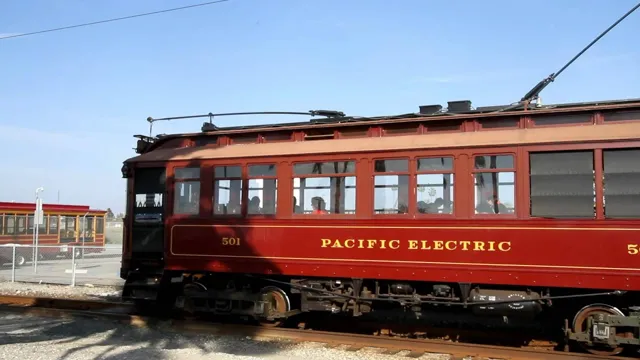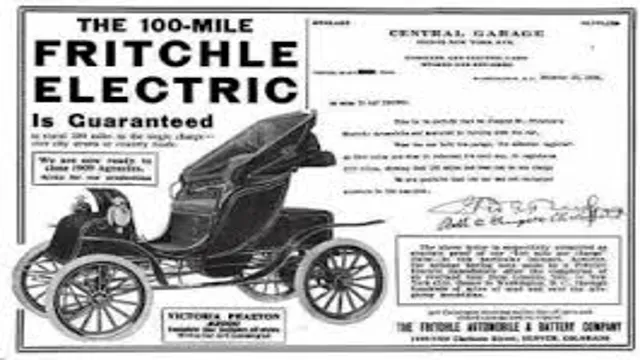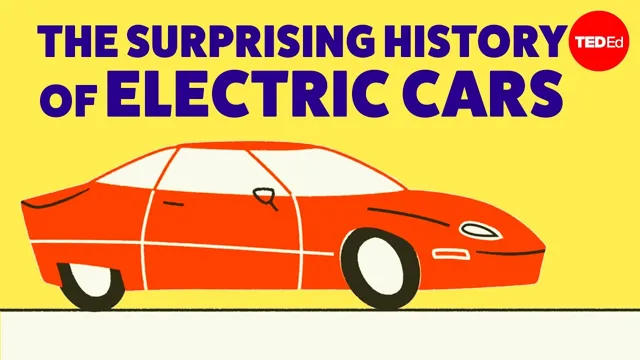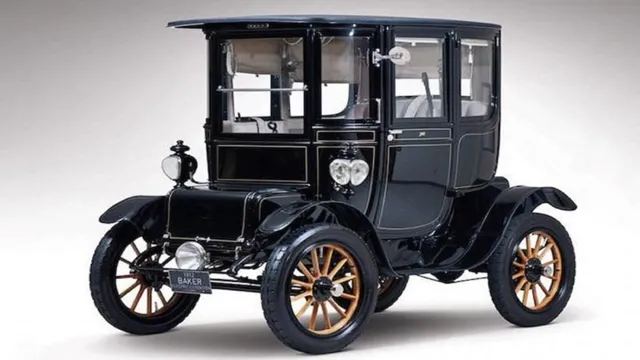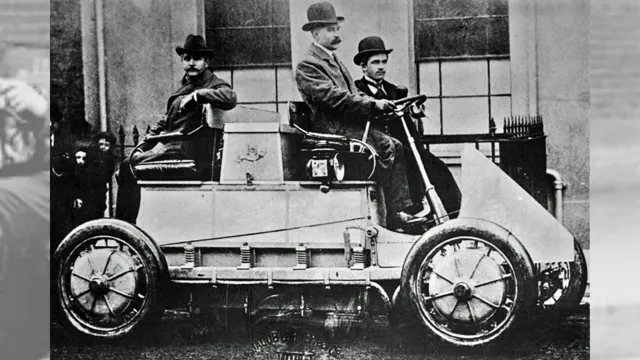Uncover the Fascinating History of Pacific Electric Red Cars – The Pioneers of Modern Public Transportation
Do you know the history behind the Pacific Electric Red Car? If you’re a history buff or a transportation enthusiast, you’ll want to keep reading. The Pacific Electric Railway, also known as “the Red Cars,” was a massive network of electric railways that operated in Southern California from the late 1800s to the mid-1900s. The Red Cars were iconic, known for their bright red color and spacious interiors.
This transportation system was a vital part of the growth and development of Southern California, connecting people from suburban areas to the city and revolutionizing the way people traveled. So, let’s take a journey back in time and explore the fascinating history of the Pacific Electric Red Car.
Introduction: The Rise and Fall of the Pacific Electric Red Car
The Pacific Electric Red Car holds a special place in the heart of many Southern Californians. The history of the Red Car dates back to the early 1900s when it was known as the “world’s largest interurban electric railway system.” The Red Car quickly became an iconic symbol of the city as it served millions of passengers seeking to explore Los Angeles County.
However, the Red Car’s heyday did not last forever, and by the 1950s, the once-expansive system had dwindled. Due to the influx of automobiles and the rise of freeways during the era, the Red Car was eventually forced to shut down in 196 Today, only a handful of the Red Car’s original routes remain, and most residents know the story of the rise and fall of the Pacific Electric Red Car.
It remains a beloved piece of Southern California history, and its legacy will forever be ingrained in the fabric of Los Angeles.
The Early Days: Building the Pacific Electric’s Red Car Fleet
The Pacific Electric Red Car is an iconic piece of transportation history in Southern California. The early days saw the construction and development of the impressive Red Car fleet, which transported millions of passengers throughout the region. The Pacific Electric Company was founded in 1901, and by the 1920s, the Red Car network covered over 1,100 miles of tracks.
The cars were painted a distinctive shade of red to stand out from the various other transportation options available at the time. The Red Cars were popular with commuters, and they had a lasting impact on the development and growth of Los Angeles. However, the Red Car’s decline began in the 1930s, and by the 1960s, it had ceased operations.
Despite its demise, the Pacific Electric Red Car remains an important part of Southern California’s transportation history.

The Glorious Years: The Pacific Electric’s Red Car Network
The Pacific Electric Red Car network is a part of the rich history of Los Angeles transportation. It was a cutting edge system that spanned almost 1,000 miles across Southern California, connecting the city and the suburbs in a way that had never been done before. The Red Cars were the perfect alternative to the traditional modes of transportation like trolley and horse-drawn carriages.
The system was fast, efficient, and easy to use, and it quickly became very popular. However, the Red Car network’s success was short-lived as the growth of the automobile and the development of modern highways led to its decline. Despite this, the Pacific Electric Red Car network will always be remembered as a crucial part of Los Angeles’ early transportation history.
The Decline of the Red Car: Factors That Led to the Pacific Electric’s Demise
The Pacific Electric’s iconic red cars were once the primary mode of transportation in Southern California, but the decline of this once-thriving transit system was inevitable due to several factors. One of the biggest reasons was the rise of the automobile industry, which allowed people to have more personal freedom and leisurely travel. The advent of affordable cars meant that people began to move out of the city and into the suburbs, making the already-expansive red car system less efficient and necessary.
Additionally, the introduction of buses, along with the decline of railroad travel and the outbreak of World War II, severely impacted the red car’s ridership and profitability. Finally, the Pacific Electric’s decision to focus on freight train transportation instead of passenger service was the final nail in the coffin for the iconic red cars. Though the red car system might be gone, its legacy and impact on the history and development of Southern California cannot be overstated.
Competition from Cars and Buses: The End of the Line for the Red Car
The Pacific Electric’s “Red Car” was once a staple of transportation in Southern California. However, its downfall was inevitable due to the competition from cars and buses. As personal automobiles became more affordable and prevalent, the convenience it brought to commuters overshadowed the railway system’s reliability and efficiency.
Additionally, the local and state governments’ preference for highways and roads over railways led to a decline in investment, defunding the infrastructure that the Pacific Electric relied upon to operate seamlessly. As fewer passengers opted for railway transportation and more took to the roads, the Pacific Electric was unable to keep up. Furthermore, the advent of new buses, modernized and able to move through congested traffic, making railroad unappealing to commuters, sealed the deal for the Pacific Electric.
The end of the line for the “Red Car” was inevitable, marking the end of an era that once dominated Southern California’s transportation system.
The Impact of the Great Depression on the Pacific Electric Red Car
The Great Depression had a significant impact on the Pacific Electric Red Car system, causing its gradual decline. The economic downturn led to a reduction in passenger demand and decreased revenue for the company. To make matters worse, the availability of affordable automobiles increased, leading to a shift in transportation preferences.
Additionally, the Red Car system faced internal challenges such as poor management and outdated infrastructure. The failure to modernize with the times lowered its competitiveness and credibility. The decline of the Red Car was also influenced by urban sprawl, as people moved farther away from the city center and into the suburbs.
This shift made it difficult for the Pacific Electric to maintain its vast network of rail lines. Despite attempts to revitalize the system, such as the construction of some new lines and implementation of streamlined train cars, the Pacific Electric was unable to compete with automobile transportation and the development of highways. The once-popular Red Car system ceased operations in 1961, marking the end of an era in Los Angeles public transportation.
In conclusion, the Great Depression played a significant role in the decline of the Pacific Electric Red Car system. Economic downturn, the rise of automobile transportation, and internal company issues were all factors that led to the demise of this iconic transportation system. However, its legacy lives on, with a dedicated group of enthusiasts working to preserve its rich history.
The War Years: A Temporary Reprieve for the Red Car
The Pacific Electric’s Red Car saw a temporary reprieve during the war years, as the demand for public transportation surged due to gas rationing. However, soon after the war, the rise of the automobile and suburbanization spelled doom for the once-thriving trolley system. The system was plagued with underfunding, outdated technology, and competition from new highways and improved bus services.
Another factor that contributed to the Red Car’s demise was the expansion of the freeway system, which made it much easier for residents to commute by car. As a result, the Pacific Electric was forced to discontinue its trolley services in 1961, marking the end of an era. Although the Red Car had once been an essential part of Southern California’s culture and transportation system, its demise underscored the region’s growing dependence on automobiles.
The Legacy of the Pacific Electric Red Car
The Pacific Electric Red Car was an iconic symbol of Los Angeles and played a crucial role in the city’s development throughout the 20th century. The electric railway system was first introduced in 1901 and soon became the primary mode of transportation for Angelenos. It spanned over 1,000 miles, making it one of the largest interurban networks in the world.
The red cars were known for their speed and efficiency, taking passengers from downtown LA to the beach in just a matter of minutes. However, with the advent of the automobile and the rise of suburbanization, the red cars began to lose their popularity. The last red car ran in April 1961, marking the end of an era.
But the legacy of the Pacific Electric Red Car lives on in the city’s transportation infrastructure and its cultural memory. Today, riders can still experience the spirit of the red car with the Metro Rail system, which has expanded to cover much of the original red car routes. The Pacific Electric Red Car remains an enduring symbol of Los Angeles’ past and an important piece of its history.
Preserving History: Current Efforts to Save the Red Car
The Pacific Electric Red Car is an integral part of Southern California’s history. The iconic streetcar system operated throughout Los Angeles County from the late 1800s until 1961, when it was dismantled due to the rise of automobiles and buses. Nowadays, preserving the Red Car has become a significant challenge, given that most of its original tracks and structures have been destroyed.
However, current efforts by organizations such as The Heritage Square Museum and The Los Angeles Conservancy aim to keep the legacy of the Red Car alive by restoring and preserving its remaining artifacts and landmarks. These groups have worked tirelessly to advocate for the historical significance of the Red Car and have successfully obtained grants and donations to fund conservation efforts. By highlighting the importance of the Pacific Electric Red Car, they not only celebrate Los Angeles’ past but also ensure that future generations can appreciate and learn from this vital chapter of the city’s history.
The Influence of the Pacific Electric Red Car on Los Angeles’ Development
The Pacific Electric Red Car had a tremendous impact on Los Angeles’ development, leaving behind a lasting legacy that is still noticeable today. The Red Car system, which was operated by the Pacific Electric Railroad from 1901 to 1961, made it possible for people to travel efficiently and affordably throughout the city, including Los Angeles’ outlying regions. The Red Car also helped spur the city’s growth by making it easier for people to commute to and from work, and by enabling the transportation of goods and materials throughout the city.
Despite its popularity, the Red Car system was eventually phased out due to the rise of automobiles and a lack of investment in the system’s infrastructure. However, many people still remember the Red Car fondly and celebrate its legacy in the city. Some of the former Red Car routes have even been transformed into bike paths and pedestrian walkways, preserving the system’s memory and making it possible for people to explore the city in a new way.
Overall, the Pacific Electric Red Car left an indelible mark on Los Angeles’ development, contributing to the city’s growth and shaping its transportation infrastructure in ways that are still visible today. Despite no longer being in operation, the Red Car continues to inspire people and serves as a testament to the city’s rich history.
Conclusion: Remembering the Pacific Electric Red Car
In conclusion, the Pacific Electric Red Car was not just a mode of transportation, it was a symbol of a bygone era. One can’t help but romanticize the idea of hopping aboard one of these electric beauties and traveling through the bustling streets of Los Angeles during the early 20th century. While the Red Car system may no longer be in operation, its history lives on through the memories of those who rode it and the preservation efforts of historical societies.
To quote the iconic Sunset Boulevard, “I am big, it’s the pictures that got small.” The same can be said for the Pacific Electric Red Car, it may no longer be around, but its impact and legacy are still felt today.
FAQs
What is the Pacific Electric Red Car?
The Pacific Electric Red Car refers to the electric railway system that operated in Los Angeles and surrounding areas from the late 19th century through the mid-20th century.
When did the Pacific Electric Red Car system start operating?
The Pacific Electric Red Car system began operations in 1901.
Why did the Pacific Electric Red Car system decline in popularity?
Many factors contributed to the decline of the Pacific Electric Red Car system, including the rise of automobiles and buses, the Great Depression, and changing transportation patterns.
Are any Pacific Electric Red Cars still in operation today?
No, the Pacific Electric Red Car system has been dismantled and there are no Red Cars in operation today. However, efforts are being made to preserve the history and legacy of the system through museums and exhibits.
